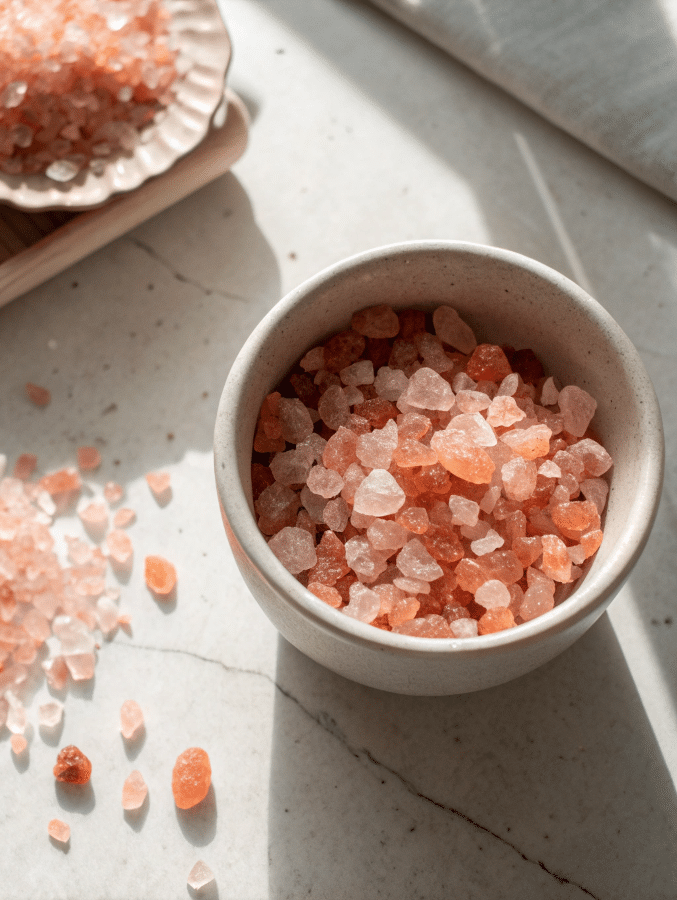
Pink salt has become one of the most talked-about ingredients in kitchens and wellness routines alike, and 2025 is no different. With its rosy hue and promises of added minerals, better hydration, and even weight loss, this ancient salt has taken on modern myth status. But how much of the buzz is actually backed by science? In this guide, we’ll break down everything you need to know about pink salt in 2025, from real benefits to bold claims, safe uses, and the hidden downsides you might not hear about on social media.
In this Article
Key Takeaways: What You Need to Know
- Pink salt, especially Himalayan, is mined from ancient deposits in Pakistan and contains trace minerals like magnesium and iron.
- It’s less processed than table salt and often promoted as a “healthier” option, though research doesn’t fully support many of its trendy claims.
- In 2025, pink salt remains a popular natural alternative in cooking, hydration rituals, and wellness routines.
- Despite the hype, pink salt doesn’t directly cause weight loss or detox the body.
- When used properly, it can be a flavorful, visually appealing addition to a balanced diet.
The Story Behind Pink Salt in 2025
The Origin and Rise of Pink Salt
My first encounter with pink salt wasn’t on a nutrition label, it was in a tiny shop on South Congress Avenue here in Austin, where a glowing salt lamp caught my eye. From there, curiosity took over. Turns out, this beautiful blush-toned mineral isn’t just trendy, it’s ancient.
Pink Himalayan salt comes from the Khewra Salt Mine in Pakistan, believed to have formed over 250 million years ago from evaporated prehistoric seas. Today, it’s hand-mined in slabs, minimally processed, and packed with up to 84 trace minerals, including potassium, calcium, and magnesium. These give it the subtle color variations that range from soft peach to deep rose.
Unlike heavily refined table salt, which often contains anti-caking agents and added iodine, pink salt is marketed as a more “natural” option. And it’s not just a pantry upgrade, it’s become a full-on wellness movement. You’ll find it in bath salts, lamps, salt scrubs, and even DIY electrolyte drinks.
Whether sprinkled over roasted veggies or ground onto your morning eggs, pink salt brings more than taste, it tells a story. As you’ll see throughout this article, the science and the myths around it continue to evolve in 2025.
The Trend Behind the Salt Craze
In a world chasing clean labels and fewer ingredients, pink salt fits the bill. Its booming popularity is fueled by wellness influencers, holistic coaches, and chefs who praise it for being both beautiful and “pure.” In 2025, it’s more than just a seasoning, it’s a lifestyle accessory.
From viral “salt water weight loss hacks” on TikTok to luxurious salt caves and spas, pink salt is everywhere. It’s positioned as a tool for detoxing, de-bloating, even boosting sleep and energy. But how much of this is marketing, and how much is real?
Part of the allure lies in perception: people want to believe natural equals better. The truth? While pink salt does contain minerals missing from refined table salt, the quantities are too small to impact your health dramatically. Still, the experience of using it, grinding those blushed crystals over fresh avocado toast, adds a feel-good factor many find irresistible.
In the culinary world, chefs favor it for texture, flavor, and visual appeal. And thanks to its versatility, it’s featured in everything from Himalayan salt-rubbed grilled steaks to homemade electrolyte drinks.
Pink Salt vs. Table Salt – What’s the Real Difference?
Nutritional Breakdown
When comparing pink salt to regular table salt, the differences seem obvious at first glance, but it’s what’s inside that counts. Both are primarily composed of sodium chloride, yet pink salt boasts up to 84 trace minerals like magnesium, potassium, and calcium. These are often cited as reasons why pink salt is considered a “healthier” option.
However, here’s the catch: the amounts of these minerals are so small that you’d need to eat pounds of pink salt to gain any meaningful nutritional benefit. By contrast, table salt is typically fortified with iodine, a mineral essential for thyroid health, something pink salt usually lacks unless labeled otherwise.
If your diet is already lacking iodine-rich foods (like seaweed or dairy), relying solely on pink salt could put you at risk of deficiency. Still, the unrefined nature of pink salt appeals to those avoiding the additives found in standard salt, like anti-caking agents.
For example, this pink salt recipe balances natural flavor and minimal processing, a win for clean eating fans.
Is One Healthier Than the Other?
While the wellness world often champions pink salt as superior, the truth is more nuanced. From a scientific standpoint, pink salt and table salt function the same in your body, regulating hydration, nerve function, and muscle contractions.
That said, there are practical lifestyle reasons why you might prefer one over the other. For instance, the pink salt diet recipe focuses on low-sodium cooking while still benefiting from the rich, earthy flavor pink salt provides. It can also be less irritating for people with sodium sensitivity, as the coarse crystals tend to be used in smaller quantities.
In summary: pink salt isn’t a cure-all, but it can be a flavorful, visually appealing swap, just make sure you’re getting iodine elsewhere.
The Health Claims, What’s Backed by Science?
What It Actually Does (and Doesn’t)
This rosy mineral may look magical on your kitchen shelf, but the reality behind its supposed powers is far less dramatic. From “balancing pH” to “boosting sleep” and “improving skin,” many claims circulate online, but most lack solid scientific evidence.
While it’s true that the body needs sodium for fluid balance, nerve function, and muscle contractions, these benefits apply to all dietary salts, not just the pink variety. The minerals it contains, like iron and magnesium, are present in such small amounts that they don’t significantly impact your health when consumed in typical serving sizes.
Still, some rituals, like adding a pinch to morning water, have gained traction. Anecdotally, people report better hydration and energy, which may stem more from drinking water consistently than from any mineral content. And while some claim it improves sleep, those effects are more likely tied to maintaining a proper sodium balance rather than the source itself.
A few studies have looked into the benefits of salt-based therapies, like inhaling air in salt caves for respiratory relief, but even those findings are inconclusive and not specific to this particular type.
Understanding “The Pink Salt Trick” for Weight Loss
One of the most viral wellness trends in recent years is the so-called “salt trick” for shedding belly fat. Promoted on social media, this method typically involves mixing water with a small amount of mineral salt and drinking it first thing in the morning.
The idea? It’s supposed to “activate digestion,” “cleanse the system,” and reduce bloating. While the hydration boost is real, the fat-burning claims are exaggerated at best. There’s no scientific evidence that drinking mineralized water alone will trigger weight loss or detox your body.
However, when combined with consistent hydration, fiber-rich meals, and movement, it might help some people feel lighter or more regular, mostly due to better fluid intake and digestion.
For a practical take, the pink salt trick recipe explains how to prepare it safely and what to expect.
If you’re curious about results and potential risks, the post Does the Pink Salt Trick Work for Weight Loss? offers an evidence-based breakdown of the trend’s pros and cons.
How Much Is Too Much? Safe Use Guidelines
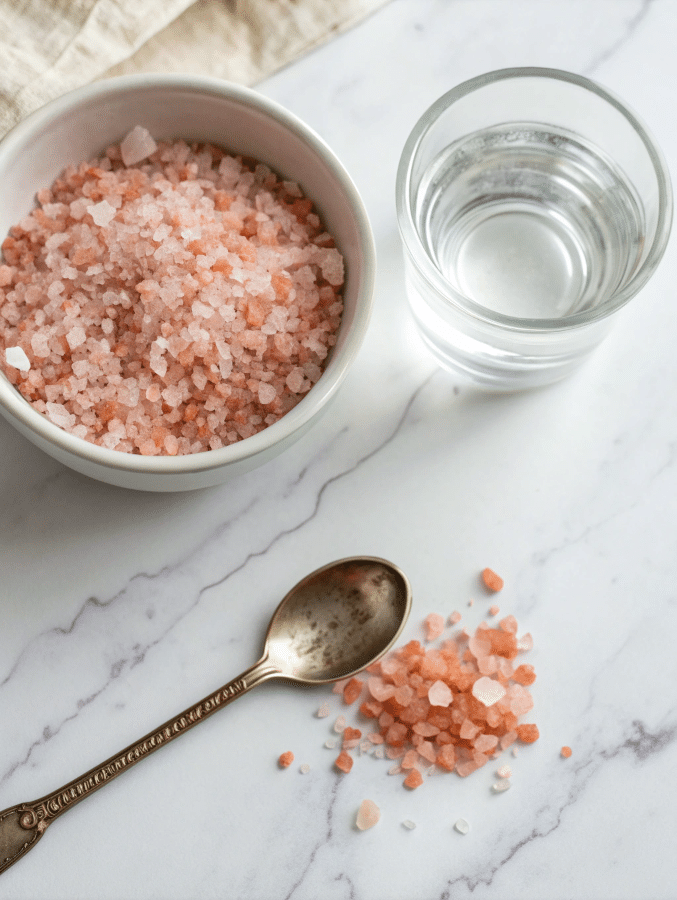
How Much Is Safe Daily?
Whether you’re using it in cooking or adding it to a hydration routine, moderation is key. All types of dietary salt contain sodium, and consuming too much can lead to elevated blood pressure, fluid retention, and increased risk of heart issues over time.
According to current U.S. guidelines, adults should aim for no more than 2,300 mg of sodium per day, which is roughly one teaspoon of finely ground salt. However, crystal size matters. Coarser grains take up more space, so a teaspoon may contain less sodium by weight than finely ground versions.
If you’re using large granules, it’s easy to misjudge how much you’re actually consuming. And while the mineral content may be appealing, these extra nutrients come in trace amounts that don’t outweigh the sodium load if overused.
Want to enjoy flavorful, low-sodium cooking? Try our pink salt weight loss recipe for women that’s built with moderation and balance in mind.
Morning Water Ritual: Myth or Health Hack?
One of the most popular uses making waves across wellness circles in 2025 is the “morning mineral water mix.” Supporters claim it improves hydration, flushes out toxins, and kick-starts digestion, all by simply dissolving salt in warm water and drinking it upon waking.
Here’s what’s actually helpful: starting your day with water does support hydration, especially after 7–8 hours of sleep. The salt? It may help replenish electrolytes in small doses, but going overboard can cause bloating or raise sodium levels too high.
A balanced ratio for this morning drink is typically ¼ to ½ teaspoon in 10 to 12 oz of water. If you’re sodium-sensitive or managing a medical condition, skip it or consult your provider first.
To see the full instructions and common variations, check out the pink salt water recipe many readers are using safely as part of a gentle wellness routine.
Uses Beyond the Kitchen
Culinary Uses That Go Beyond Seasoning
This mineral-rich salt doesn’t just season your meals, it enhances the entire cooking experience. In gourmet kitchens, large slabs are used as cooking surfaces to sear meats or serve cold appetizers. These blocks provide even heat distribution and a subtle, mineral-like flavor, making meals not just taste great but look impressive too.
Home cooks love the coarse-grind version for finishing dishes like grilled vegetables or avocado toast. The crunch and color elevate presentation without overpowering the food. Even cocktails benefit from a rim dipped in finely ground crystals, offering a slightly earthy kick to margaritas and palomas.
If you want to incorporate it into your kitchen naturally, try our Japanese pink salt recipe, which highlights both simplicity and elegance in one quick side dish.
It also works in more functional dishes. For instance, our pink salt recipe to lose weight uses it to add flavor while maintaining a lighter, cleaner nutritional profile.
Beauty, Bath, and Air Purification Trends
Beyond food, this mineral salt has become a wellness accessory in self-care routines. It’s used in:
- Bath salts to soothe sore muscles and exfoliate skin
- Salt lamps claimed to purify indoor air
- Salt caves where people seek relief from respiratory issues
While some users swear by these products, the scientific support is minimal. For example, salt lamps may create a relaxing ambiance, but there’s no strong evidence they reduce airborne toxins. Similarly, salt cave therapy (halotherapy) has shown limited respiratory benefits in small studies, but results are inconsistent.
That said, self-care isn’t always about science, it’s also about how it makes you feel. A warm bath with mineral salt can certainly provide a relaxing, spa-like experience after a long day, whether or not there’s hard proof behind the mineral claims.
Pros and Cons of Choosing Pink Salt
Advantages of Choosing It
The appeal of this mineral-rich salt lies not just in its aesthetic, but in its perceived purity and versatility. For one, it’s less refined than standard table salt, meaning it’s free from artificial anti-caking agents and usually processed without bleach or additives.
Its naturally occurring trace minerals, including magnesium, potassium, and calcium, are a big selling point. Though present in small amounts, these minerals contribute to its color and subtly distinct flavor.
In terms of culinary experience, it excels as both a seasoning and a finishing touch. Its coarse texture adds crunch and the soft rose tones enhance visual appeal. It’s also a great fit for low-sodium recipes, like the Oprah pink salt recipe, which focuses on flavor without excessive sodium.
Beyond food, many choose it for wellness rituals, from bath soaks to salt scrubs, as part of a holistic lifestyle that values simplicity and natural living.
Disadvantages and Controversies
Despite its glow-up in the wellness world, not all that glitters is health gold. One of the biggest concerns is its lack of iodine, a crucial nutrient for thyroid function. Unless fortified, it does not support iodine intake the way table salt does. This can be especially risky for people who don’t consume enough iodine-rich foods like dairy, eggs, or seaweed.
It’s also significantly more expensive, often costing 10 to 15 times more than regular salt. While many are willing to pay for the perceived benefits, most studies show no measurable health advantage when comparing different types of salt.
Another issue? Exaggerated marketing. Claims that it detoxes, heals, or promotes weight loss are often unverified and fueled by viral trends, not clinical evidence.
There’s also an environmental angle. As global demand rises, concerns about overmining and sustainability of natural salt sources have begun to surface. Like any product tied to wellness trends, responsible sourcing matters.
To understand its role in diet-focused recipes, check out the pink salt trick recipe for weight loss, which presents a balanced approach to use and benefit.
Which Salt Should You Choose?
Pink Salt vs. Other Natural Salts
In the crowded world of specialty salts, pink salt continues to stand out in 2025. But how does it compare to other natural varieties like sea salt, Celtic salt, and kosher salt?
Pink salt is often favored for its visual appeal and mineral diversity, which gives it a slight edge in gourmet cooking. While sea salt also contains trace minerals, pink salt’s unique color and coarse texture make it a favorite for chefs plating visually impressive dishes. Compared to kosher salt, which has larger crystals ideal for dry brining, pink salt delivers a more nuanced flavor, and a dose of marketing magic.
Celtic salt, harvested from coastal France, shares similar unrefined properties, but has a higher moisture content and a gray tint. For those focused on clean eating and presentation, pink salt often feels like the most versatile and attractive choice.
To explore one of our most loved versions, visit the Japanese pink salt and ice recipe, a beautiful balance of hydration and tradition.
Expert Tips: Picking the Right Salt for Your Needs
So which one should you reach for in your kitchen? If you’re looking for a mineral-rich, additive-free salt that’s also stylish on the table, pink salt is an excellent option. It’s ideal for seasoning, finishing, and adding that “wellness touch” to recipes and rituals alike.
However, if you require iodine in your diet, don’t rely solely on pink salt unless you’re getting it elsewhere through food or supplements. People managing blood pressure or fluid retention may also need to monitor total sodium intake, regardless of the source.
For those focused on clean recipes with balanced use of sodium, the pink salt weight loss recipe offers a great starting point to cook with intention.
Ultimately, the best salt is the one that aligns with your health goals, lifestyle, and palate. And when used mindfully, pink salt can be a beautiful and beneficial part of that balance.

Pink Salt Morning Drink for Hydration and Digestion (2025)
Ingredients
Equipment
Method
- Pour 8 to 12 ounces of filtered water into a glass.

- Add ¼ teaspoon of pink salt and stir until fully dissolved.
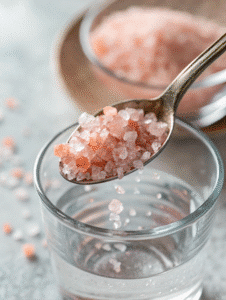
- Drink first thing in the morning on an empty stomach.
- Do not exceed more than one serving per day.
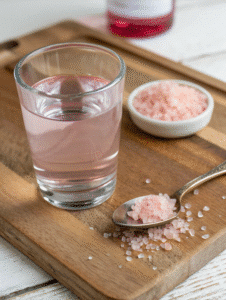
- Monitor how your body reacts and adjust based on comfort.
Nutrition
Notes
Tried this recipe?
Let us know how it was!Conclusion: Should You Add Pink Salt to Your Life in 2025?
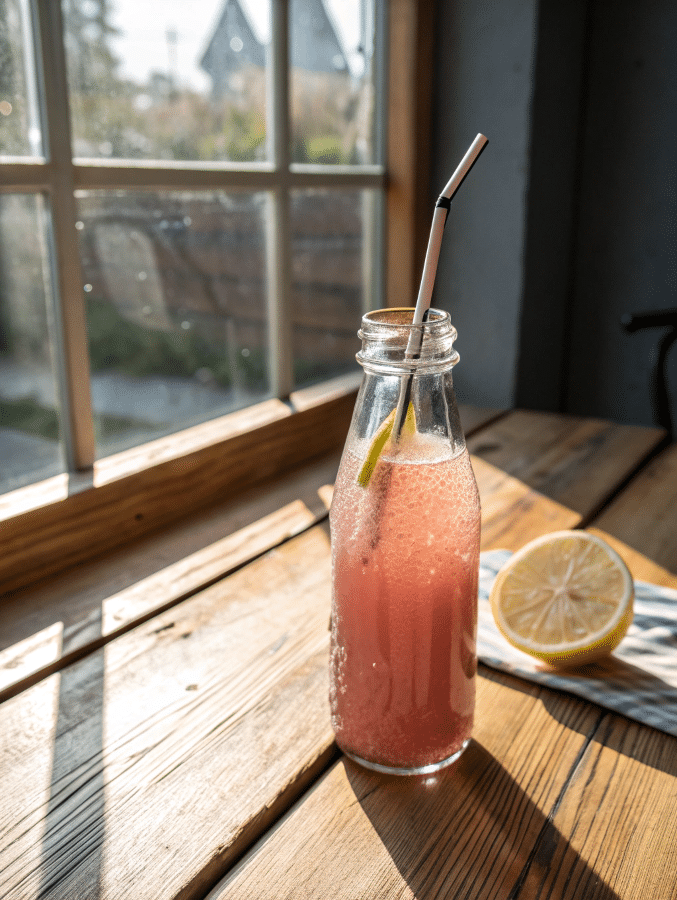
In 2025, pink salt remains one of the most popular natural ingredients in both culinary and wellness circles. With its mineral-rich origin, stunning hue, and clean profile, it brings beauty and flavor to your meals and rituals. However, it’s important to cut through the wellness noise. Despite the buzz, pink salt isn’t a miracle mineral, it won’t melt fat, detox your organs, or transform your health overnight.
Used wisely, it can be a part of a mindful kitchen and self-care routine. But as with anything health-related, moderation, knowledge, and variety are your best tools.
If you’re curious to try it in your next recipe or daily ritual, browse our pink salt recipe archive for balanced, flavorful ideas that make the most of this beautiful mineral.
FAQ: About Pink Salt, Answered
What is so special about pink salt?
It’s hand-harvested from ancient seabeds in the Himalayan region and contains trace minerals that give it a unique blush color and subtle flavor. It’s less processed than table salt and free of chemical additives, which adds to its appeal.
What is the pink salt trick for weight loss?
This involves drinking a glass of water with a small amount of pink salt in the morning to support hydration and digestion. While many users report feeling lighter and less bloated, there’s no scientific evidence that pink salt directly causes fat loss. You can read more about sodium’s role in hydration at NHLBI.gov.
Is pink salt any good for you?
In moderation, yes. It’s a flavorful, minimally processed salt that can complement a clean-eating lifestyle. Just remember, it contains sodium, so balance is key.
What is the difference between pink salt and normal salt?
The main differences lie in processing and content. Table salt is refined and often iodized, while pink salt is raw, mineral-rich, and unfortified. Learn more on Wikipedia’s Salt page.
What is the disadvantage of pink salt?
It lacks iodine (unless fortified), can be costly, and the health claims aren’t always backed by science.
What is the healthiest salt to use?
The healthiest salt is one used in moderation and chosen based on your dietary needs. If you require iodine, opt for iodized salt or supplement it in your meals.
Which salt is good for belly fat loss?
No salt can target belly fat. Hydration and a clean diet matter more than any single ingredient.
How did Adele lose weight?
She reportedly followed a calorie-controlled diet and a consistent fitness routine. Pink salt was not a part of her weight loss strategy.
How much pink salt should I put in my water in the morning?
A general recommendation is ¼ to ½ teaspoon dissolved in 8–12 oz of water. Always listen to your body and avoid overuse, especially if you’re on a sodium-restricted diet.


